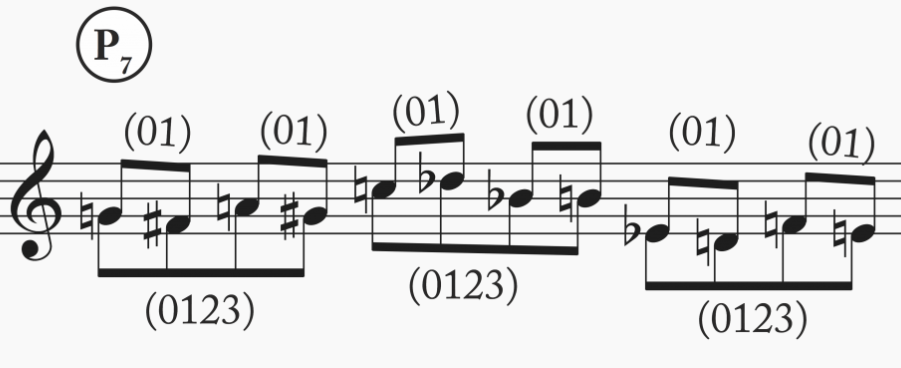7.4: Twelve-Tone Theory - Derived Rows
- Page ID
- 61905
Derived rows are rows whose non-overlapping segments (discrete segments) belong to the same set class. Because they must not overlap, discrete subsets divide the row into either six 2-note segments, four 3-note segments, three 4-note segments, or two 6-note segments. (In general, we are mostly concerned with rows that are trichordally- or tetrachordally-derived.)
An example is offered below. This row (from Webern’s String Quartet, Op. 28) has been divided into discrete tetrachords and discrete dyads. All of the tetrachords belong to the set class (0123). Thus, we say that the row is tetrachordally derived, and that it is generated by (0123). Further, the discrete dyads indicated an interesting dyadic derivation, by (01).

From a compositional and listener-oriented perspective, derived rows are very suggestive. Because the set-class content of a row doesn’t change when it’s transposed, inverted, etc., these set classes will circulate constantly throughout a piece, even if different row forms are used. Therefore, a derived row guarantees the regular recurrence of a very small selection of set class—thus ensuring a particular type of unity throughout a piece.


